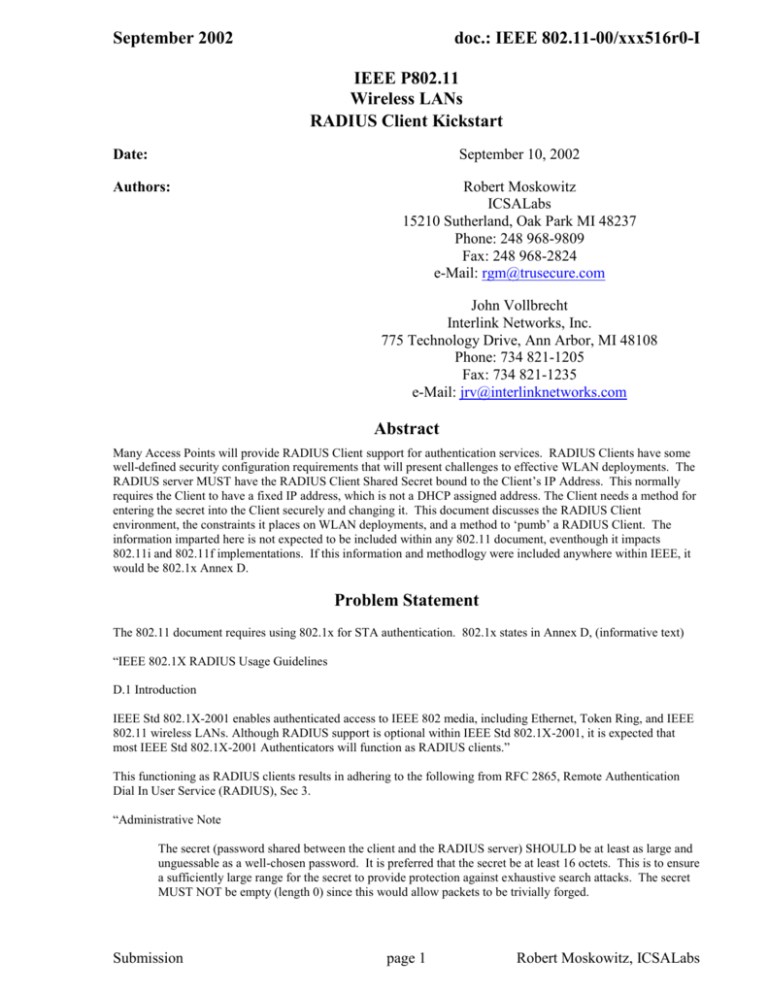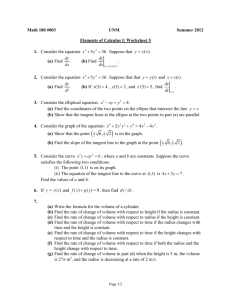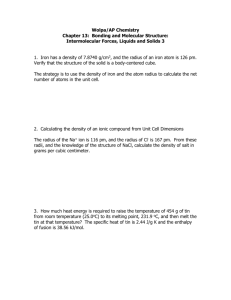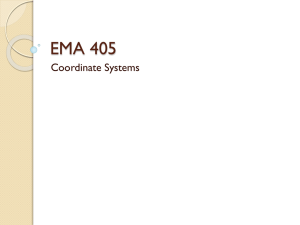11-02-516r0-I-RADIUS Client Kickstart
advertisement

September 2002 doc.: IEEE 802.11-00/xxx516r0-I IEEE P802.11 Wireless LANs RADIUS Client Kickstart Date: September 10, 2002 Authors: Robert Moskowitz ICSALabs 15210 Sutherland, Oak Park MI 48237 Phone: 248 968-9809 Fax: 248 968-2824 e-Mail: rgm@trusecure.com John Vollbrecht Interlink Networks, Inc. 775 Technology Drive, Ann Arbor, MI 48108 Phone: 734 821-1205 Fax: 734 821-1235 e-Mail: jrv@interlinknetworks.com Abstract Many Access Points will provide RADIUS Client support for authentication services. RADIUS Clients have some well-defined security configuration requirements that will present challenges to effective WLAN deployments. The RADIUS server MUST have the RADIUS Client Shared Secret bound to the Client’s IP Address. This normally requires the Client to have a fixed IP address, which is not a DHCP assigned address. The Client needs a method for entering the secret into the Client securely and changing it. This document discusses the RADIUS Client environment, the constraints it places on WLAN deployments, and a method to ‘pumb’ a RADIUS Client. The information imparted here is not expected to be included within any 802.11 document, eventhough it impacts 802.11i and 802.11f implementations. If this information and methodlogy were included anywhere within IEEE, it would be 802.1x Annex D. Problem Statement The 802.11 document requires using 802.1x for STA authentication. 802.1x states in Annex D, (informative text) “IEEE 802.1X RADIUS Usage Guidelines D.1 Introduction IEEE Std 802.1X-2001 enables authenticated access to IEEE 802 media, including Ethernet, Token Ring, and IEEE 802.11 wireless LANs. Although RADIUS support is optional within IEEE Std 802.1X-2001, it is expected that most IEEE Std 802.1X-2001 Authenticators will function as RADIUS clients.” This functioning as RADIUS clients results in adhering to the following from RFC 2865, Remote Authentication Dial In User Service (RADIUS), Sec 3. “Administrative Note The secret (password shared between the client and the RADIUS server) SHOULD be at least as large and unguessable as a well-chosen password. It is preferred that the secret be at least 16 octets. This is to ensure a sufficiently large range for the secret to provide protection against exhaustive search attacks. The secret MUST NOT be empty (length 0) since this would allow packets to be trivially forged. Submission page 1 Robert Moskowitz, ICSALabs September 2002 doc.: IEEE 802.11-00/xxx516r0-I A RADIUS server MUST use the source IP address of the RADIUS UDP packet to decide which shared secret to use, so that RADIUS requests can be proxied.” Simply put, every AP implementing RADIUS support MUST: Provide a secure method for entering the RADIUS Client secret that SHOULD be at least 16 bytes. Either provide the RADIUS Server with the Client’s IP address, or provide a name that can be readily resolved to its IP address, for example the Client’s DNS name. The first casualty is the use by the AP of DHCP for its IP address assignment. DHCP can only be used if the DHCP server always leases the same address to the AP, or the RADIUS Server can query the DHCP Server for the AP’s IP address by a DNS-styled name. The second casualty is AP auto configuration for small offices. You MUST enter the shared secret into the AP in addition to setting the AP’s IP address information (that most small office support people are not trained for). The final casualty is network security. Secret changes after personel changes are cumbersome and thus may not be done. Attack Methodology The creation of a new RADIUS Client table in the Server, keyed by a Client ‘name’ and a master password, coupled with a Client boot protocol to update the traditional Client Database of IPaddress and shared secret, will provide the methodology needed. There must also be a method to force an update of the master password by the Server to enact a management framework. Thus there will be a new data file in the Server and 3 new Client/Server functions. These functions MIGHT be implemented over the RADIUS protocol or a more appropriate protocol could be used for any of them. Function 1 – Client Master Secret Kickstart This is a protocol that will facilitate the Server’s discovery of a new Access Point and provide for an over-the-wire establishment of a Master Secret. The details of this protocol still need to be worked out. The Client name SHOULD be the BSSID. Function 2 – Client Master Secret Change This protocol will allow the Server to trigger a change of the Master Secret. It MUST provide Perfect Forward Secrecy from the current Master Secret. The details of this protocol still need to be worked out. Function 3 – Client Boot Session Secret When the Client boots, it will use its Name and Master Secret to authenticate its IPaddress to the Server and establish a Randomly selected Session Secret as the Client shared secret in RFC 2865. If the Master Secret is changed via Function 2, a new boot Session Secret will also be created. The details of this protocol still need to be worked out. Submission page 2 Robert Moskowitz, ICSALabs September 2002 Submission doc.: IEEE 802.11-00/xxx516r0-I page 3 Robert Moskowitz, ICSALabs









